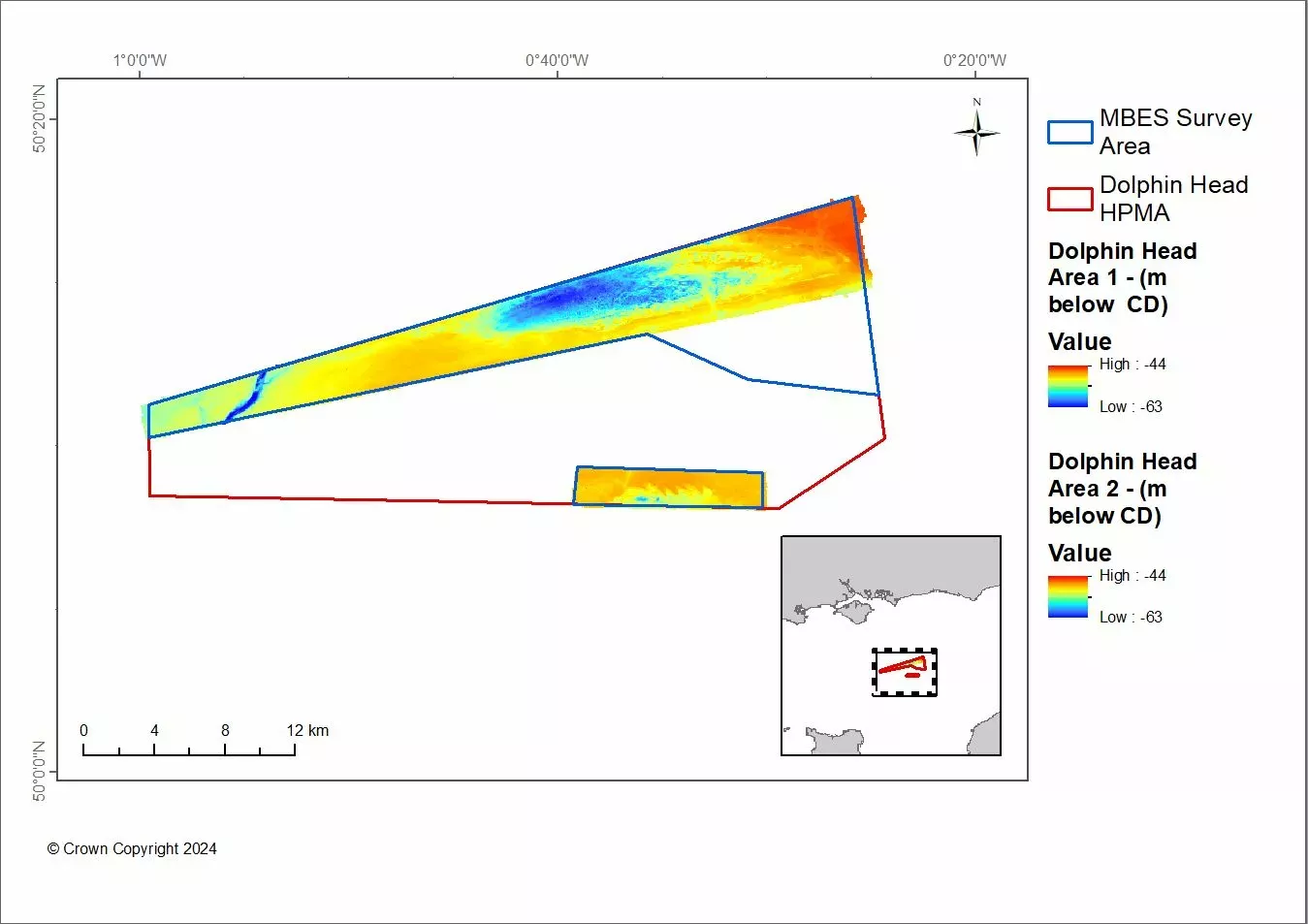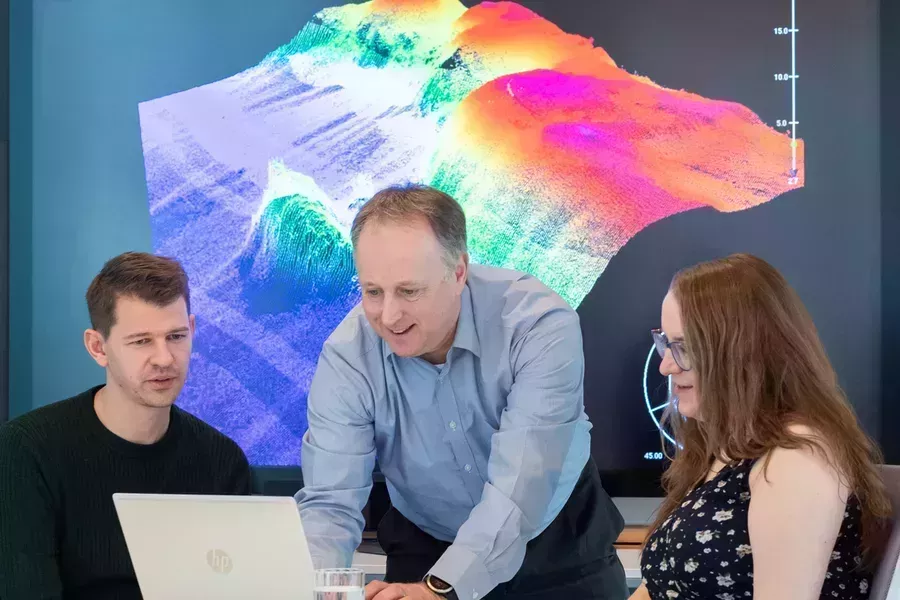
Situated approximately 55km south of Selsey Bill, West Sussex, in the Eastern English Channel, sits the Dolphin Head Highly Protected Marine Area (HPMA). HPMAs are areas of the sea designated for the protection and recovery of marine ecosystems. These areas prohibit extractive, destructive, and depositional uses, allowing only non-damaging activities accepted by international law.

Covering an area of 466 km2, with depths ranging from approximately 45 to 62 metres, Dolphin Head is one of three sites in the UK designated as an HPMA in 2023. As an HPMA, all species, habitats and associated ecosystems within the site boundary, including the seabed and water columns, are protected.
The area has relatively high levels of biodiversity within the wider Eastern Channel region and attracts seabirds, marine mammals and fish species. The seabed in the area comprises a mix of three broad-scale habitats: high-energy circalittoral rock, sublittoral coarse sediment and sublittoral mixed sediments. The range of habitat types in the area more broadly supports a range of benthic, demersal and mobile species such as sponges, tube worms, anemones and bivalves.
How bathymetric data supports conservation monitoring in Highly Protected Marine Areas
The Joint Nature Conservation Committee (JNCC), the Statutory Nature Conservation Body for offshore HPMAs, undertook baseline monitoring surveys of the Dolphin Head HPMA between September and December 2023. The surveys are the first point in a time series of data to determine the progress of the HPMA towards achieving its conservation objective.
As part of this baseline, JNCC and the Centre for Environment, Fisheries and Aquaculture Science (CEFAS) engaged with the Hydrographic Programmes team at the UK Hydrographic Office (UKHO) to conduct a full hydrographic survey of the HPMA.
The purpose of the hydrographic survey was to collect high-resolution bathymetric data to capture information on the depths and shapes of the underwater terrain; this will enable scientists to have a better understanding of the nature of the seabed habitats where fish and other marine life feed, live and breed.
BodyDespite the atrocious weather conditions and heavy traffic in the area, we’re satisfied with the hydrographic survey and the data collected. We hope that it acts as the baseline for the conservation area, enabling the CEFAS team to carry out future surveys to track environmental changes and manage the marine protected area.
Using a multibeam echosounder system to map the seabed
Three hydrographic surveyors from the UKHO Scientific Analysis Group boarded the Research Vessel (RV) CEFAS Endeavour at Falmouth in November 2023 for a ten-day voyage terminating in Lowestoft, during which they would survey Dolphin Head HPMA.
The RV Cefas Endeavour is a multi-disciplinary research vessel with specialist survey equipment for a range of activities. Using a multibeam echosounder system — a sonar used to map the seabed — and Global Navigation Satellite Systems, the team undertook a systematic hydrographic survey of the seafloor after pre-survey sensor functionality checks and a patch test.
It also provides a high-quality baseline for the HPMA that will aid future monitoring and be valuable for a variety of other marine uses affecting decision-making on the sustainable economic growth and protection of our marine environment.
Despite the poor weather conditions and high volumes of traffic — owing to the location of Dolphin Head near the western end of the Dover Straits Traffic Separation Scheme — the team, working 24 hours a day, completed the hydrographic survey in eight days.
Whilst on board, the team undertook initial data processing and ensured they covered the survey area and met specification and contract requirements. Once back at the UKHO headquarters, the validation team analysed the data's accuracy before making it available to the CEFAS team.
BodyA representative on behalf of CEFAS commented:
This survey was a little different to our usual work, a refreshing change and great to work with the UKHO and the JNCC marine mammal experts. A real learning experience!


